Introduction
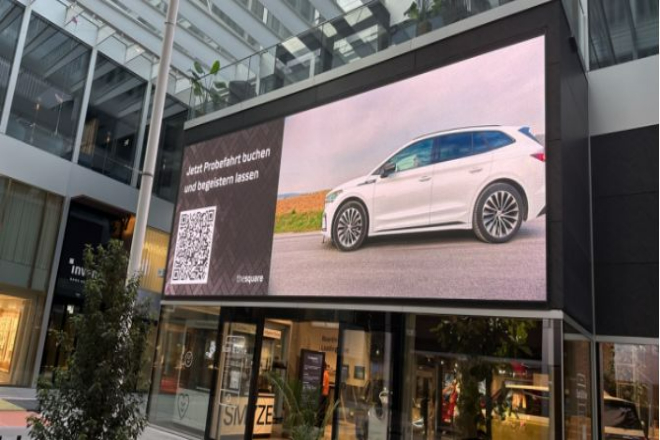
Que ce soit dans une zone urbaine animée ou dans une banlieue tranquille, nous pouvons voir Afficheurs LEDCependant, il existe des différences significatives dans l'environnement d'installation entre les zones urbaines et suburbaines, ce qui impose des exigences différentes pour la sélection, l'installation et la maintenance ultérieure des écrans LED.
Quelles sont les différences spécifiques ? Lisez simplement l'article et vous le saurez.
Différence 1 : Différence entre les spécifications des produits d'affichage LED et le pas de point
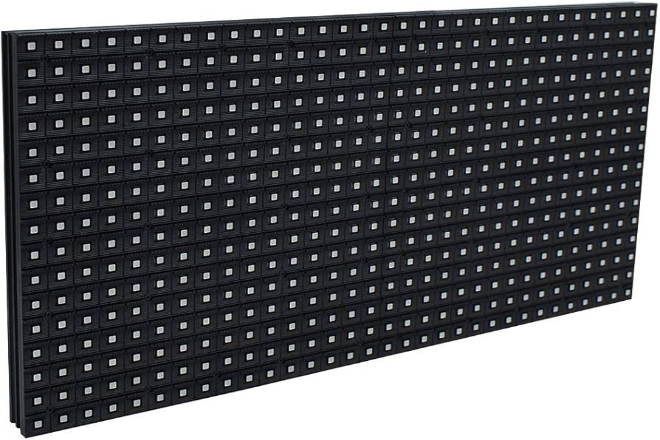
1). Environnement d'installation urbaine
1.1). Flux de foule et distance de visualisation:
En tant que zone centrale de la ville, la zone urbaine connaît un flux important de personnes et un flux constant de piétons et de véhicules.
La distance de visualisation est relativement courte car les piétons sont généralement proches de l’écran, peut-être à quelques mètres ou à quelques dizaines de mètres.
1.2). Exigences de clarté :
En raison de la courte distance de visualisation, les spectateurs ont des exigences très élevées en matière de clarté de l'écran d'affichage.
Des images claires peuvent offrir une meilleure expérience visuelle, attirer davantage l’attention du public et avoir une plus grande valeur pour la publicité commerciale, la diffusion d’informations, etc.
1.3). Sélection des spécifications du produit :
Afin de répondre aux exigences de haute définition, les écrans d'affichage LED installés en zone urbaine utilisent principalement des produits à petit pas.
Le pas de point (c'est-à-dire la distance entre deux pixels adjacents) est inférieur à P3, voire P0,6 ou moins, ce qui signifie que la densité de pixels est plus élevée et qu'il y a plus de pixels par unité de surface, ce qui permet d'obtenir un affichage plus clair. La clarté est proche ou atteint l'effet d'affichage de l'écran LCD.
1.4). Autres considérations :
Outre la clarté, les écrans LED installés dans les zones urbaines doivent également tenir compte des caractéristiques anti-éblouissantes, anti-reflets et autres pour garantir une bonne visibilité dans diverses conditions d'éclairage.
Dans le même temps, en raison de l’environnement urbain complexe, l’installation et la maintenance des écrans d’affichage doivent également être plus pratiques et plus efficaces.
2). Environnement d'installation suburbain
2.1). Flux de foule et distance de visualisation :
Par rapport aux zones urbaines, les banlieues ont moins de trafic piétonnier, mais le trafic automobile peut encore être important.
La distance de visualisation est longue car le public peut regarder l’écran dans un véhicule en mouvement ou à une longue distance.
2.2). Exigences de clarté et de luminosité :
Bien que la clarté soit toujours importante, la luminosité et le contraste deviennent des facteurs plus critiques lors de la visualisation à distance.
L'écran doit être suffisamment lumineux pour rester clairement visible dans des conditions d'éclairage de jour ou de nuit tout en présentant un contraste élevé pour garantir que l'image soit clairement distincte.
2.3). Sélection des spécifications du produit :
Afin de répondre aux exigences de visualisation longue distance et de luminosité, les écrans d'affichage LED installés en banlieue utilisent principalement des produits à grand pas.
Le pas de point est compris entre P4 et P20, et le choix spécifique dépend de la distance d'affichage, du budget et des besoins visuels du public.
Les produits à grand pas ont généralement une luminosité plus élevée, de meilleures performances de dissipation thermique et un coût inférieur. Ils sont également plus adaptés à une utilisation dans des zones ouvertes telles que les banlieues.
2.4). Autres considérations :
L'environnement suburbain peut être plus rude, avec des conditions météorologiques telles que le vent, le sable, la pluie et la neige, de sorte que l'écran d'affichage doit avoir de meilleures performances de protection.
Dans le même temps, en raison de l’espace relativement ouvert dans les banlieues, la taille et la méthode d’installation de l’écran d’affichage peuvent également être plus flexibles et diversifiées.
Différence 2 : Différence dans les exigences de luminosité de l'affichage LED
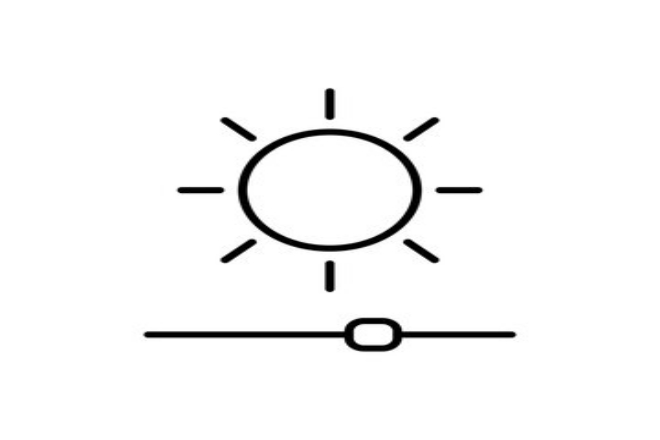
1). Environnement d'installation urbaine
1.1). Pollution lumineuse et lieu d'installation :
En ville, la pollution lumineuse est vraiment grave. On trouve partout des néons et des panneaux publicitaires aussi lumineux que le jour.
Cependant, les écrans LED sont généralement installés à l'intérieur des zones urbaines, comme dans les centres commerciaux, les salles de conférence ou sur les murs extérieurs des bâtiments. Dans ces endroits, la lumière directe du soleil est rare, l'écran n'a donc pas besoin d'être particulièrement lumineux.
1.2). Luminosité exigence:
La luminosité des écrans LED dans les zones urbaines n'a pas besoin d'être trop élevée. Pensez-y : l'environnement intérieur est sombre et si l'écran est trop lumineux, vos yeux ne pourront pas le supporter après l'avoir regardé pendant un certain temps.
De plus, une luminosité trop élevée gaspille de l'électricité et n'est pas respectueuse de l'environnement. Par conséquent, la luminosité des écrans d'affichage dans les zones urbaines doit être modérée, ce qui permet aux gens de regarder confortablement et d'économiser de l'électricité.
1.3). L’efficacité énergétique doit également être prise en compte :
De nos jours, tout le monde est attentif aux économies d'énergie et à la protection de l'environnement, et les écrans LED dans les zones urbaines ne font pas exception. Une luminosité modérée est non seulement agréable à regarder, mais permet également d'économiser de l'énergie et de réduire les coûts d'exploitation. N'est-ce pas faire d'une pierre deux coups ?
2). Environnement d'installation suburbain
2.1). Environnement ouvert, lumière directe du soleil :
En banlieue, l'environnement est ouvert et les écrans LED sont souvent exposés directement au soleil. Imaginez, en plein été, le soleil est si fort que si l'écran d'affichage n'est pas assez lumineux, vous ne pouvez pas voir clairement du tout.
2.2). Les exigences de luminosité doivent être élevées :
Par conséquent, les écrans d'affichage LED dans les banlieues doivent être très lumineux. Cela garantit un affichage clair même sous un fort ensoleillement. L'écran d'affichage installé face au sud est exposé à la lumière directe du soleil pendant une longue période et la luminosité doit être plus élevée.
Pour les pièces orientées au nord, où la lumière directe du soleil est moins fréquente, la luminosité peut être réduite de manière appropriée. Cependant, en général, la luminosité des écrans d'affichage dans les banlieues est beaucoup plus élevée que dans les zones urbaines.
2.3). Réglage de la luminosité, automatique :
La luminosité de l'écran LED dans les banlieues est réglée automatiquement. Pensez-y : la lumière du soleil est forte pendant la journée, l'écran d'affichage doit donc être réglé sur le réglage le plus lumineux. La nuit, lorsque la lumière est faible, l'écran d'affichage doit également être atténué.
Cela permet non seulement de garantir l'effet d'affichage, mais également de réduire la pollution lumineuse et la consommation d'énergie. Quelle intelligence !
Plus précisément, la plage de luminosité des écrans LED extérieurs en banlieue est d’environ 1 500 nits et 8 000 nits.
Si le téléviseur est installé face au sud et exposé au soleil pendant une longue période, il faudra peut-être régler la luminosité à plus de 3000 cd/m², voire 7000 cd/m² ou plus. S'il est installé face au nord, la luminosité peut être réduite en conséquence. Entre 2000 cd/m² et 5500 cd/m² suffisent. Bien entendu, cela dépend des conditions d'éclairage ambiant.
Différence 3 : Différence dans les méthodes d'installation des écrans LED
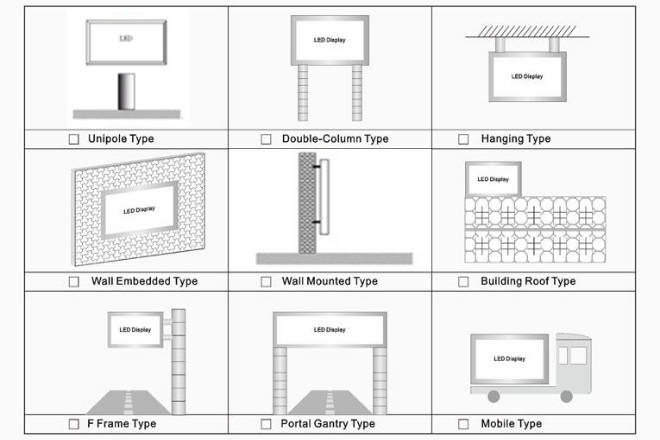
1). Environnement d'installation urbaine
1.1). Espace limité et environnement complexe :
En ville, chaque centimètre carré de terrain est précieux et l'espace est extrêmement limité. De plus, l'environnement d'installation est également très complexe, avec des immeubles de grande hauteur partout et des structures murales de différents types. Certaines sont de vieilles maisons et la capacité de charge doit être soigneusement prise en compte.
De plus, il y a une foule dense de personnes et de véhicules dans la ville, donc l'installation doit être faite avec prudence afin de ne pas affecter la sécurité de la circulation et des piétons.
1.2). Tenez compte de la portance et de la protection :
Lors de l'installation d'écrans LED en zone urbaine, il convient de prêter une attention particulière à la capacité portante du mur. Après tout, l'écran d'affichage n'est pas léger et il serait dangereux que le mur ne soit pas suffisamment porteur.
De plus, des mesures de protection doivent être prises, telles que l'installation de protections contre la pluie et d'équipements de protection contre la foudre, pour garantir que l'écran d'affichage puisse fonctionner normalement même par mauvais temps.
2). Environnement d'installation suburbain
2.1). Espace ouvert et environnement simple :
En banlieue, c'est différent : l'espace est très ouvert et on peut le décorer comme on le souhaite. De plus, l'environnement d'installation est relativement simple, sans autant de gratte-ciels ni de structures murales complexes que dans les zones urbaines.
2.2). Tenez compte de la stabilité et de la sécurité :
Lors de l'installation d'écrans LED en banlieue, même si l'espace est ouvert, la stabilité et la sécurité doivent également être prises en compte. Après tout, si l'écran d'affichage n'est pas fixé solidement, il tombera en cas de vent, ce qui sera une catastrophe.
Par conséquent, lors de l'installation, vous devez choisir un bon emplacement, poser de bonnes fondations et vous assurer que l'écran d'affichage est stable. Dans le même temps, des mesures de protection telles que la protection contre la foudre et la protection contre le vent doivent être prises pour garantir la sécurité de l'écran d'affichage même par mauvais temps.
Différence 4 : Différences dans les exigences de dissipation thermique et de protection des écrans LED
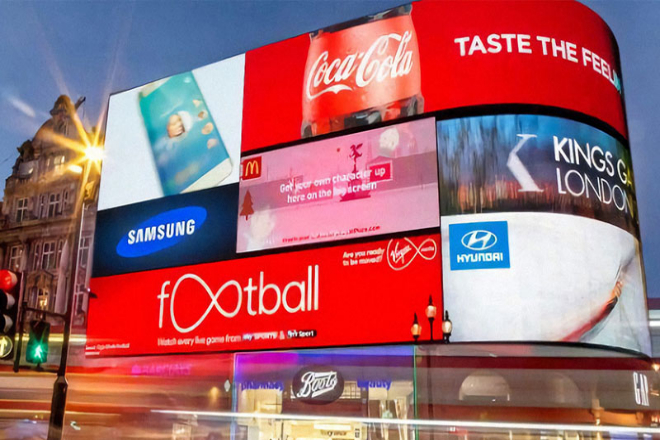
1). Environnement d'installation urbaine
1.1). L'environnement est relativement fermé ; la température est élevée, mais les conditions de dissipation de la chaleur sont bonnes :
Dans les zones urbaines, l'environnement est relativement fermé, avec des immeubles de grande hauteur partout, et la circulation de l'air n'est pas si fluide, donc la température est souvent plus élevée. Cependant, les écrans LED dans les zones urbaines sont principalement installés à l'intérieur ou à la surface des bâtiments, où les conditions de dissipation de la chaleur sont en fait assez bonnes.
Il y a des climatiseurs, des ventilateurs et d'autres équipements de refroidissement à l'intérieur, et la surface du bâtiment peut également dissiper la chaleur grâce à la convection naturelle du vent.
Par conséquent, les exigences de dissipation thermique des écrans d'affichage LED urbains sont relativement faibles et ils peuvent s'afficher normalement à des températures normales sans trop se soucier de la surchauffe.
1.2). Faibles besoins de dissipation thermique, un entretien de routine est suffisant :
Grâce aux bonnes conditions de dissipation de la chaleur, la conception de la dissipation de la chaleur des écrans d'affichage à LED urbains peut être relativement simple sans qu'il soit nécessaire d'installer trop de dispositifs de dissipation de la chaleur. Dans le cadre d'une maintenance régulière, il est possible de garantir le fonctionnement normal de l'écran en s'assurant que le canal de dissipation de la chaleur n'est pas obstrué.
2). Environnement d'installation suburbain
2.1). L'environnement est ouvert, avec de grandes variations de température et une forte humidité :
En banlieue, c'est différent : l'environnement est ouvert et exposé au vent et au soleil. En été, la température et l'humidité sont extrêmement élevées, ce qui constitue un test pour les écrans LED.
Les températures élevées entraînent un échauffement accru des composants électroniques à l'intérieur de l'écran, tandis que l'humidité peut provoquer l'humidification des composants électroniques, provoquer des courts-circuits et d'autres problèmes. Par conséquent, les écrans d'affichage LED dans les banlieues doivent faire de gros efforts pour dissiper la chaleur et la protéger.
2.2). Un équipement de climatisation doit être installé pour favoriser la dissipation de la chaleur, et les performances de protection doivent également être solides :
Afin de garantir que l'affichage LED de banlieue puisse fonctionner normalement même dans des environnements difficiles, il est souvent nécessaire d'installer un équipement de climatisation pour aider à la dissipation de la chaleur.
Le climatiseur peut régler la température à l'intérieur de l'écran d'affichage et la maintenir dans une plage appropriée, prolongeant ainsi la durée de vie de l'écran d'affichage.
En même temps, l'écran d'affichage LED dans les banlieues doit également être étanche, coupe-vent et résistant aux chocs. L'étanchéité vise à empêcher la pluie d'envahir l'intérieur de l'écran et de causer des dommages.
Le coupe-vent empêche les vents forts de faire tomber l'écran ou de l'endommager ; et la résistance aux tremblements de terre empêche les catastrophes naturelles telles que les tremblements de terre d'affecter l'écran.
2.3). Protection complète pour assurer un fonctionnement stable :
En général, les écrans d’affichage LED en banlieue doivent prendre en compte plusieurs facteurs en termes de dissipation thermique et de protection.
Outre l'installation d'équipements de climatisation, il peut également être nécessaire d'utiliser des matériaux de dissipation thermique spéciaux, de concevoir une structure de dissipation thermique raisonnable, de renforcer la fixation et le support de l'écran d'affichage et d'autres mesures pour assurer le fonctionnement stable de l'écran d'affichage.
Différence 5 : Différences entre le contenu et les fonctions de l'affichage LED
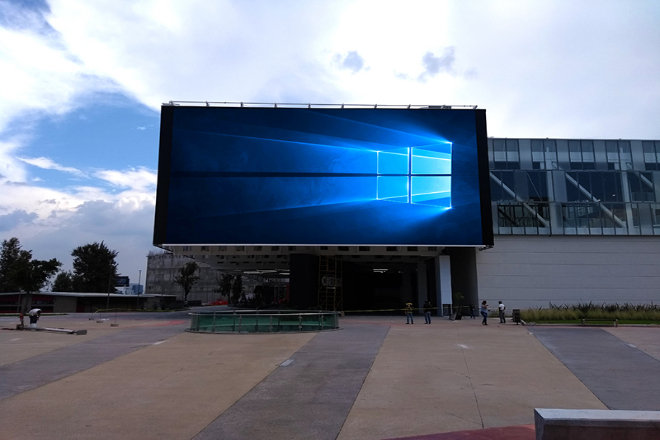
1). Environnement d'installation urbaine
1.1). Flux important de personnes, besoins divers des spectateurs :
En tant que zone centrale de la ville, la zone urbaine connaît un flux important de personnes, une composition de foule complexe et des besoins divers des spectateurs.
Par conséquent, le contenu d’affichage et les fonctions des écrans LED urbains doivent être plus étendus et diversifiés pour répondre aux besoins des différents spectateurs.
1.2). Le contenu affiché est riche et varié :
Les écrans LED urbains ne sont pas seulement utilisés à des fins publicitaires, mais sont également largement utilisés dans les affichages de big data, les conférences, les expositions et d'autres occasions. Par exemple, dans les quartiers commerciaux, les écrans LED peuvent diffuser des publicités dynamiques et des informations promotionnelles pour inciter les passants à s'arrêter.
Dans les centres de conférence ou les halls d'exposition, les écrans LED peuvent afficher des présentations, des analyses de données, des supports vidéo et d'autres contenus pour améliorer la qualité des conférences et des expositions. Efficacité et engagement.
1.3). Puissant et interactif :
Les écrans LED urbains ont tendance à avoir une fonctionnalité et une interactivité plus fortes. Certains écrans prennent en charge l'interaction tactile ou l'interaction via d'autres appareils, qui peuvent être utilisés pour des jeux interactifs, des demandes d'informations, etc.
Cette interactivité renforce non seulement le sentiment de participation du spectateur, mais améliore également l’attrait et la valeur pratique de l’affichage.
2). Environnement d'installation suburbain
2.1). Le flux de personnes est relativement faible et les besoins des spectateurs sont relativement simples :
En revanche, le flux de population dans les banlieues est relativement faible et la composition des téléspectateurs est relativement homogène.
Par conséquent, le contenu d'affichage et les fonctions des écrans LED de banlieue sont relativement simples, principalement axés sur la publicité.
2.2). Principalement utilisé pour la publicité :
Les écrans LED de banlieue sont principalement utilisés pour diffuser des vidéos publicitaires, des vidéos, du contenu textuel, etc. Ces contenus sont conçus pour attirer l'attention des passants et accroître la notoriété de la marque ou du produit.
En raison de l'espace ouvert et de la longue distance de visualisation dans les banlieues, le contenu publicitaire doit être plus accrocheur et concis afin qu'il puisse être clairement reconnu à une plus grande distance.
2.3). Les fonctions sont relativement simples, mettant l'accent sur l'aspect pratique :
Les fonctions des écrans LED de banlieue sont relativement simples, diffusant principalement des publicités. Bien que certains écrans d'affichage disposent également de fonctions d'affichage de base, telles que l'affichage de l'heure, les prévisions météorologiques, etc., ils se concentrent généralement davantage sur l'aspect pratique pour répondre aux besoins de base de la publicité de banlieue.
Conclusion
En résumé, il existe des différences significatives entre les écrans LED urbains et suburbains à de nombreux égards. Ces différences ne se reflètent pas seulement dans les spécifications des produits et les exigences de luminosité, mais concernent également les méthodes d'installation, la dissipation thermique et les exigences de protection, ainsi que le contenu et les fonctions de l'écran.
Par conséquent, lors de la sélection et de l'installation des écrans d'affichage LED, nous devons pleinement prendre en compte l'environnement d'utilisation et les exigences spécifiques pour garantir la rationalité de la sélection et la faisabilité de l'installation.
Enfin, si vous souhaitez en savoir plus sur les écrans LED, veuillez nous contacter.
